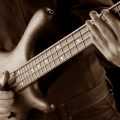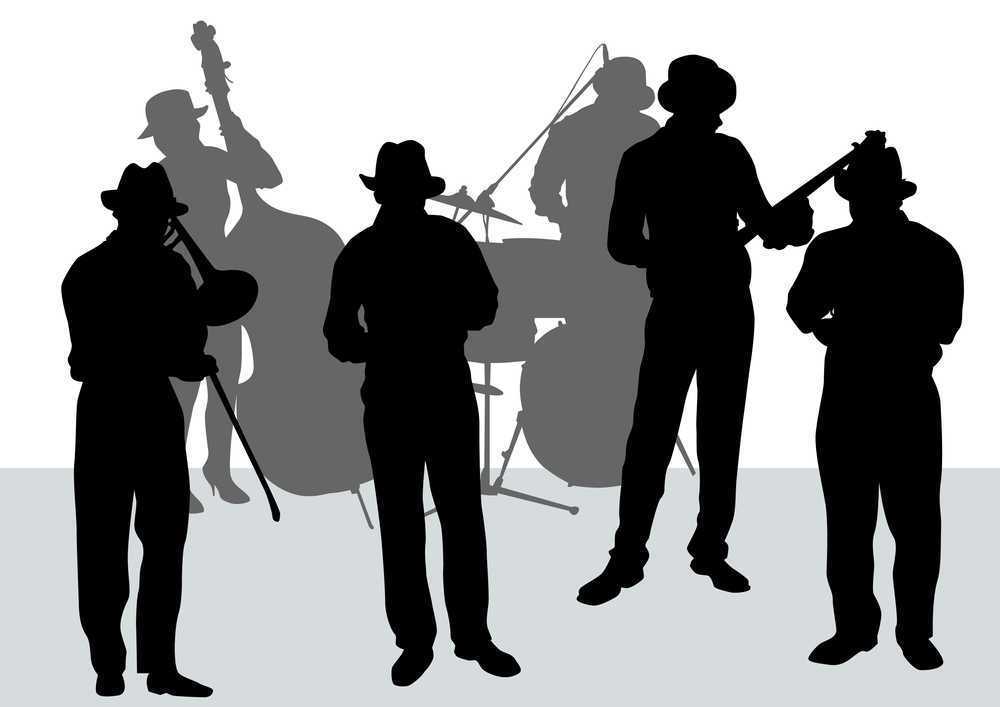For some reason, some people (mostly non-musicians) look at most bands and see the bassist as the least important element, but this opinion couldn’t be more wrong. Yes, it’s not very difficult to pick up the bass play a couple of notes, but getting a solid, cohesive sound out of the bass is incredibly difficult and can take years of hard work to achieve. Practically anyone can play a simple bass line, but it takes true skill to get a crisp, solid sound out of the bass. This is a special Musika Lessons bass tutorial. If you want to learn how to play the bass but aren’t sure how to get started, you’ve come to the right place. We’ll walk you through everything from how to produce clear tones on the bass to how to play scales and arpeggios.
To get the most out of this bass tutorial, here’s what you’ll need:
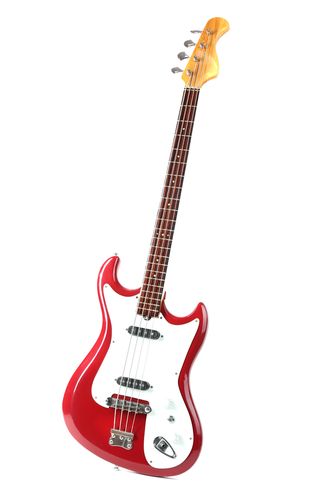 -A bass guitar (obviously).
-A bass guitar (obviously).
-A metronome. These are devices that produce consistent rhythms you can practice to. Your local music store will have tons of options available and there’s even loads of cheap and free metronome apps you can download straight to your phone. As you’ll soon see, practicing with a metronome is hugely important for bassists, so make sure you pick up one!
-A pencil and paper. You’ll need to write down some of the information here if you want to memorize it and apply it to your playing.
-A bass amp (optional). You’ll be better off if you have a bass amp to practice to because the bass is too quiet on its own. But if you don’t have an amp yet, don’t let that stop you from getting the most out of this bass tutorial.
Why the bass is so important
Before we jump into some helpful exercises to get you acquainted with the bass, let’s talk a little bit about why it’s so important. If we think of pieces of music as structures, the bass guitar would serve as a part of the harmonic foundation. The parts of the structure we all know and are familiar with––the doors, windows, roof and paint––those are the chords and melodies we hear in music, and they wouldn’t be presented and supported in nearly as effective of a way if it wasn’t for the bass guitar’s important role.
The bass is responsible for playing all the low notes in a piece of music. Often, the bass plays the roots of chords found in songs. And in case you aren’t familiar, the root note is the foundation of a chord, and with that note we’re able to discern what key the chord is in. But that’s not all the bass does.
The notes the bass is capable of playing are often so low that listeners can feel them over hearing them. This is why the bass works so well with the percussion elements of a band and is even considered to be a main component of a band’s rhythm section. In particular, the bass works in concert with the bass drum to form the bones of a piece of music: the basic rhythm and foundation of the chord progressions. So yeah, the bass does often get overlooked, but it’s an extremely important component in the music we all know, love and listen to.
Now that you know what the bass guitar does, let’s show you how to play the thing!
Holding the bass
The correct position for holding the bass changes slightly from person-to-person, but as a general rule, you’re going to want to situate the body of the bass upright against your torso. Some bass beginners mistakenly position the neck of their instrument up against their torso so they can see their fingers more easily, but holding the bass like this is bad technique, and you’ll have trouble playing even the most basic material this way.
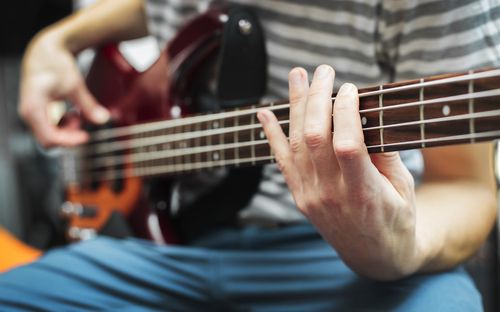
Pick vs. fingers
Depending on the style of music you’re interested in playing, you’ll either play the bass with a hard pick or your fingers. Lofty bass aficionados will insist that the bass can only be properly played using your fingers, but there’s plenty of examples of great bassists using a pick to play, particularly in the punk genre. For the sake of this tutorial, we recommend beginning by using your fingers and then switching to using a pick when you feel comfortable. It’s much harder to do it the other way around, and there’s a ton of vital bass technique that gets lost when you only use a pick to play.
It’s hugely important that you learn to employ the alternate picking technique right from the very beginning. Whether you use your fingers or a pick, alternate picking is the technique of alternating the way you pick each time you hit a note. If you’re using your fingers, this means that you’ll alternate between your index and middle fingers. If you’re using a pick, alternate between picking down and up. You’ll use this technique for most everything you play on the bass: lines of melody, scales and exercises.
Reading bass tabs
We’ve got a few bass exercises to show you, but first let’s talk about how to read bass tabs. Tabs are not music notation. Learning how to read music is massively important for bassists and all musicians, but tabs are a way of communicating big musical ideas in a simple way. We recommend learning to read music as quickly as you can, but tabs serve as a sort of music notation shorthand. With tabs, we can learn scales, bass lines and other exercises in a quick and easy way.
In bass tabs, lines represent the bass’ strings and the numbers represent its frets. In case you don’t already know yet, frets are the boxes located on the neck of the bass. If you see a “0” placed on a string in a bass tab, that’s an instruction to play that string as open. Here’s a simple bass tab to help you get started:

Tabs are great, but they can’t do one massively important thing: instruct you how to play with the correct rhythm in a piece of music. For scales and exercises, you can set your own rhythm, but if you’re trying to play someone else’s music, you’ll have to try to match the rhythm of the music you’re learning, and that can be really difficult.
Bass Tutorial Exercise #1: Up and down warmup
Our first exercise is designed to introduce your hands and fingers to the bass. You’ll start by playing the lowest string on the bass open without your left hand fingers touching the guitar. This string, which we’ll call the fourth string, should be the string closest to you. After you’ve played that string, press your left hand’s index finger down on the same string’s first fret and play that note. Use your middle, ring and pinky fingers to play the second, third and fourth frets. You don’t need to keep your fingers held down for new notes to be produced, by the way. Copy this exact same sequence on every string until you reach the first string’s fourth fret. Then, repeat everything you did but backwards until you reach the fourth open string.

To get the most out of this exercise, make sure you use the alternate picking technique we discussed and to practice what you see here to the slow click of a metronome. Start slow and make sure you’re as solid as possible with playing this exercise’s notes to a strict rhythm. Us bassists should use every opportunity we can to develop our rhythm skills!
Bass Tutorial Exercise #2: Major scales
In our last exercise, we got your fingers used to playing notes on the bass. For this next one, we’ll introduce you to a simple major scale shape. Want to know what makes our lives a little easier as bassists? When can move everything from intricate bass lines to the simple major scale shape we’re about to show you to other places on the bass as long as the material doesn’t have any open notes. Anything with closed notes (notes that require you to press your finger down) can be moved to different keys as long as the relationship between notes are the same. After you learn this simple scale shape on the third fret, create your own major scale drill by practicing this shape with a metronome. Without pausing, play one major scale on each fret before moving up or down the bass.

Bass Tutorial Exercise #3: Major and minor arpeggios
For the most part, us bassists don’t really play chords that often––chords are when two or more notes are played simultaneously––but learning some simple arpeggio shapes is a great way to get ready to support the chords played in the music we’re a part of. Not to be confused with a scale, arpeggios outline the notes of different chords. But like scales, if we play closed arpeggio shapes, we can move them all over the fretboard and to any key.
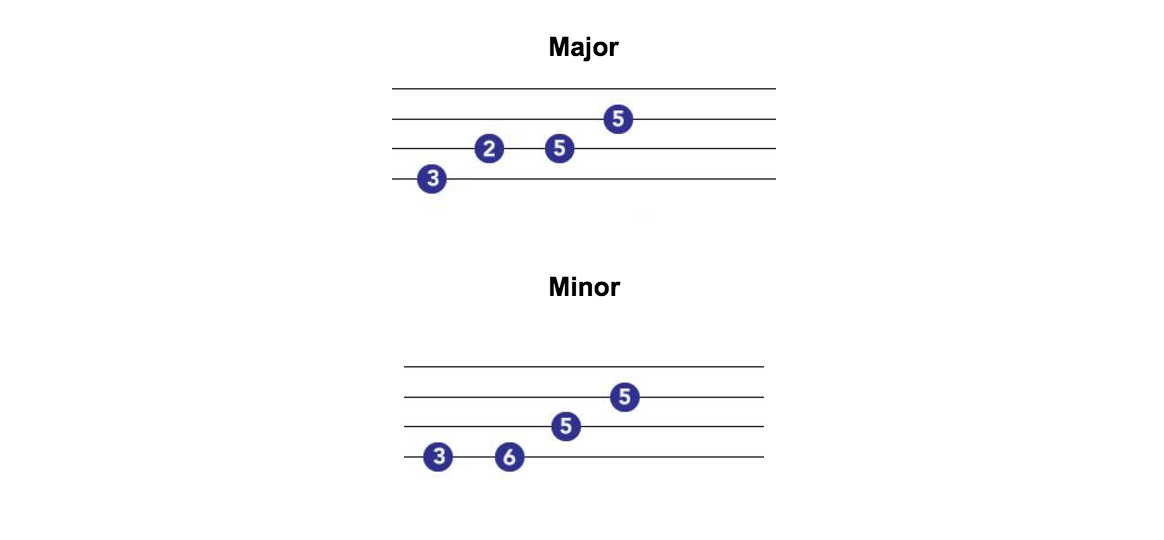
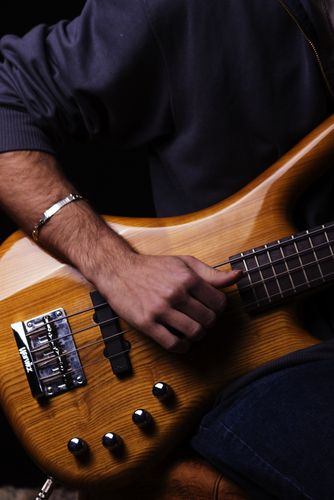
Well, that about wraps up this special Musika Lessons bass tutorial. We recommend practicing the material from this tutorial at least three times a week for an hour each practice if you want to really internalize the concepts introduced here. But if you’re really serious about wanting to learn how to play the bass, we recommend working with an experienced teacher in your area. No tutorial or online video can replace the warmth and patience of a knowledgeable teacher. For more helpful articles about the world of music, check out what else we’ve got posted on our blog!


